How to Quickly Learn to Ice Skate
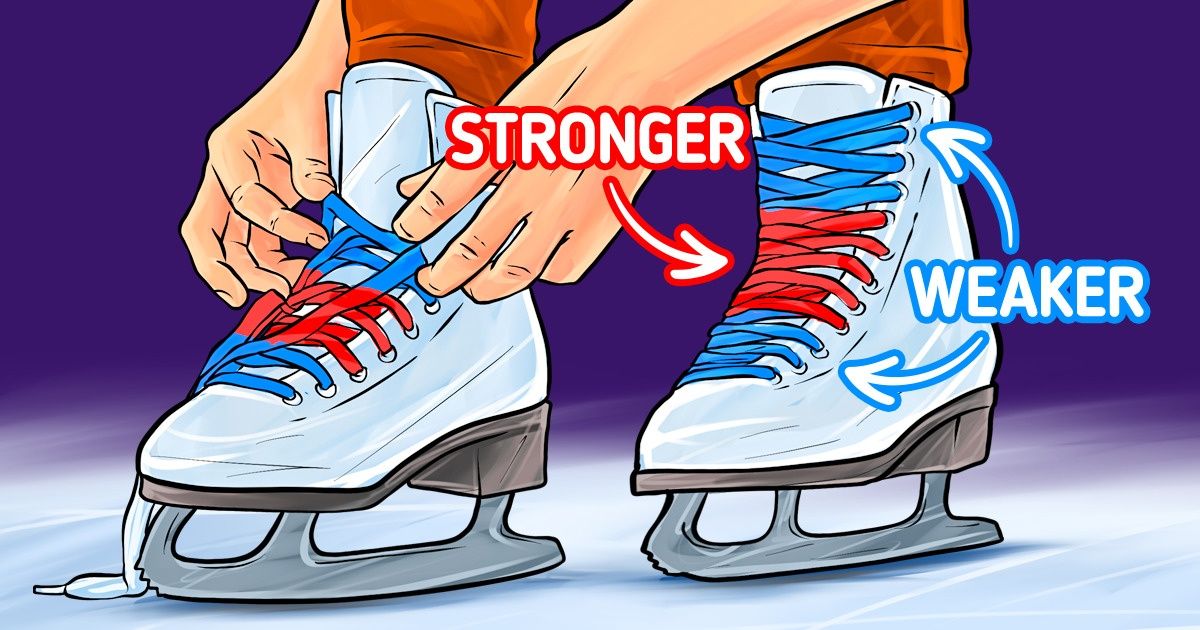
Skating is a joyful and useful activity both for adults and kids during the cold time of year. All because skating trains us to keep our balance and to develop speed, it teaches us to control our body and puts tension in our muscles.
5-Minute Crafts has made a step-by-step guide that will help you to quickly learn how to skate.
How to stand on ice
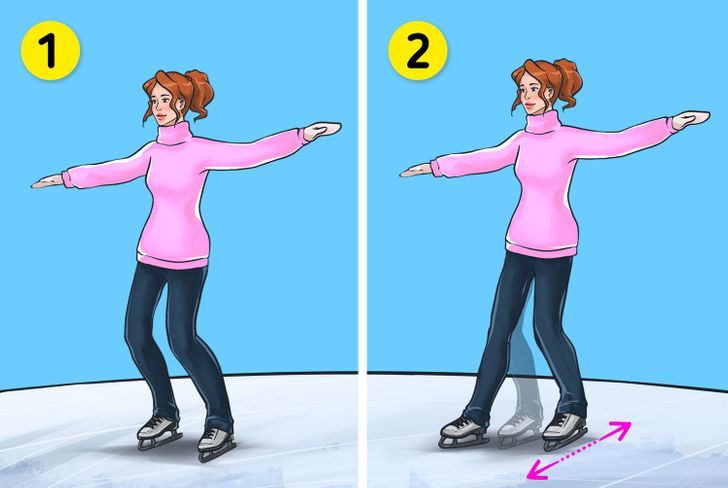
-
Place your feet shoulder-width apart and bend your legs slightly at the knees. Try to keep your back straight. Spread your arms to the sides so that they are parallel to the floor. Place the skate blades parallel to each other. At this stage, it is important to learn to keep your balance.
-
Move the right leg a bit forward but don’t take it away from the ice. Return to the initial position and repeat the same exercise with your left leg.
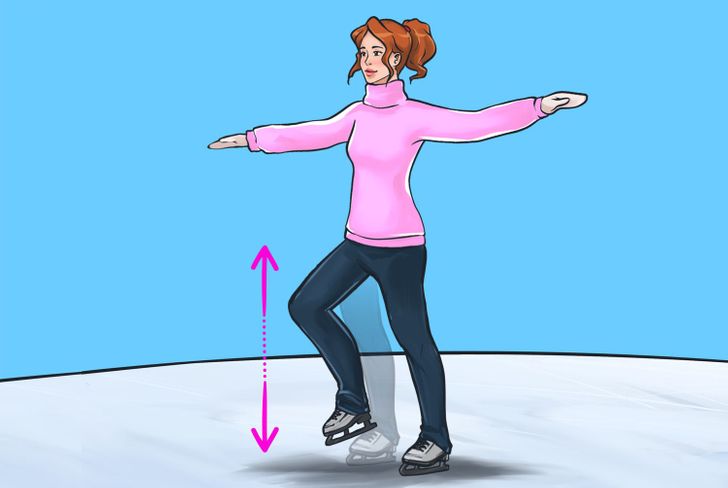
-
Alternate legs and keep taking your legs off the ice.
-
Try to take several steps. But don’t slide and don’t unbend your knees fully. Maintain your balance with outstretched arms.
How to fall correctly
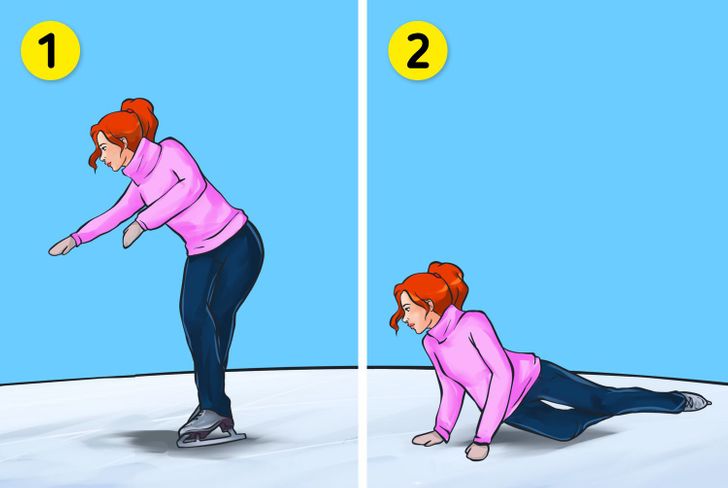
The ability to fall correctly is an important skill that can protect you from trauma. The best option is to fall on your side, not on your arms or back. Bend your arms as you fall. It’s forbidden to fall on straight arms — this can lead to fractures. When you feel that you are starting to fall, try to sit down and fall to the side. Try not to touch the ice with your knees when you are falling — this will help you to avoid severe joint injuries and bruises.
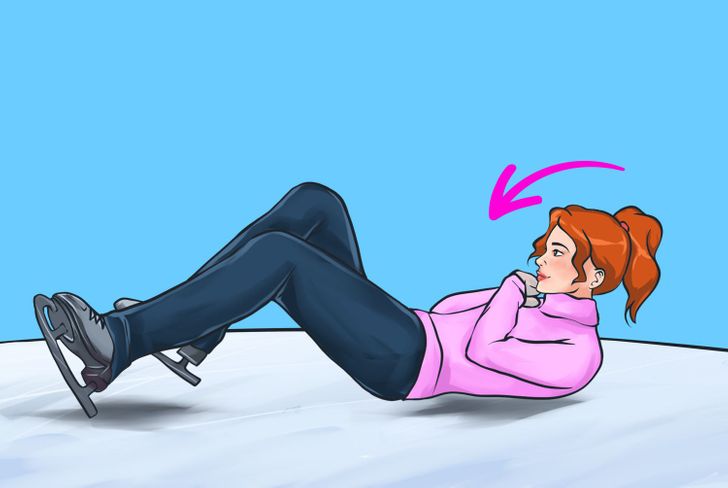
If you are falling backward, it’s important to not hit the back of your head on the ice. In order to avoid this, you need to pull in, bend your head forward, and press your chin to your chest.
How to slide on skates
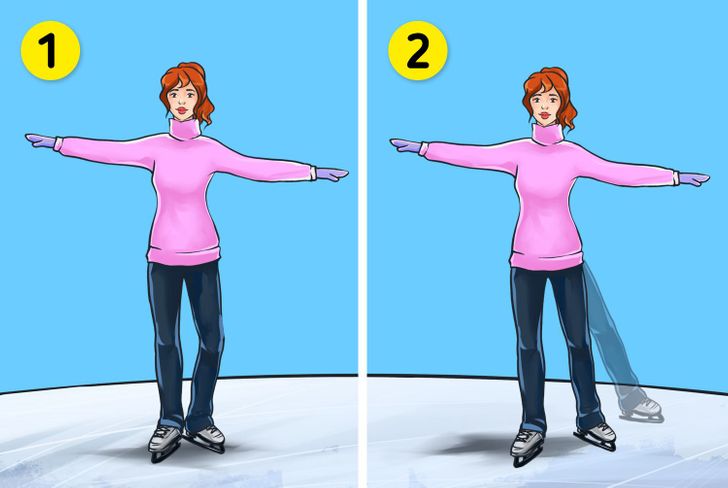
-
First, try to make several sliding movements back and forth — first with one foot, and then with the other, standing next to the brim of the rink.
-
Go back to the initial position: keep your torso and back straight, arms are parallel to the ice, knees should be slightly bent. Turn one of your legs diagonally (as shown in the illustration). Push off with the edge of the skate blade of your extended leg and tilt the boot slightly inward. This should start you sliding.
-
After that, bring your leg back to the initial position and repeat the same movements with the other leg. Alternately shift your center of gravity from one leg to the other, slightly unbending and bending them again. Spread your arms to the sides so that you can keep your balance. At the same time, your shoulders should be turned in the moving direction.
How to stop
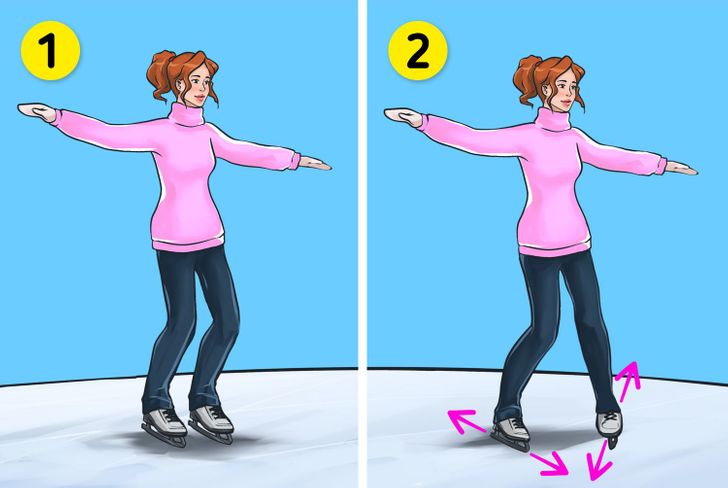
- Method #1: Place the skates parallel to each other, slightly bend your legs at the knee area. Pull the toes of the skates together and push the heels out. At the same time, press on the inner edges of the skate blades and you will stop. This method is suitable for medium and slow speeds.
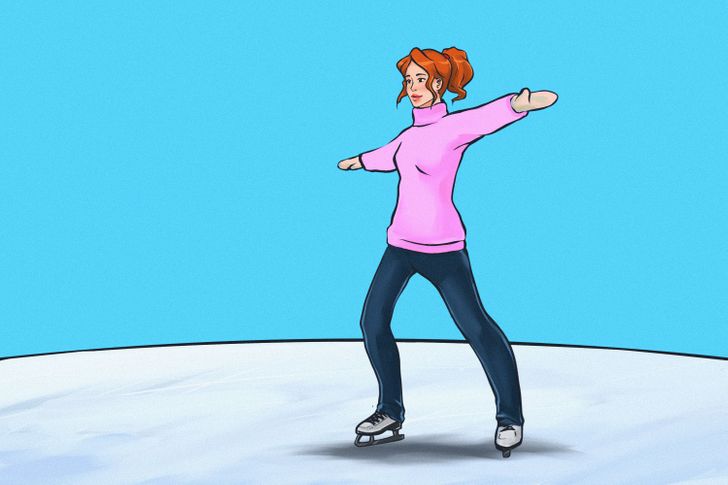
- Method #2: Place one leg backward. Turn your foot counter to the direction of your movement — it should be at a one-step distance behind the heel of the supporting leg. Keep your shoulders straight and spread your arms to the sides. Bend your supporting leg slightly at the knee.
How to do a turn
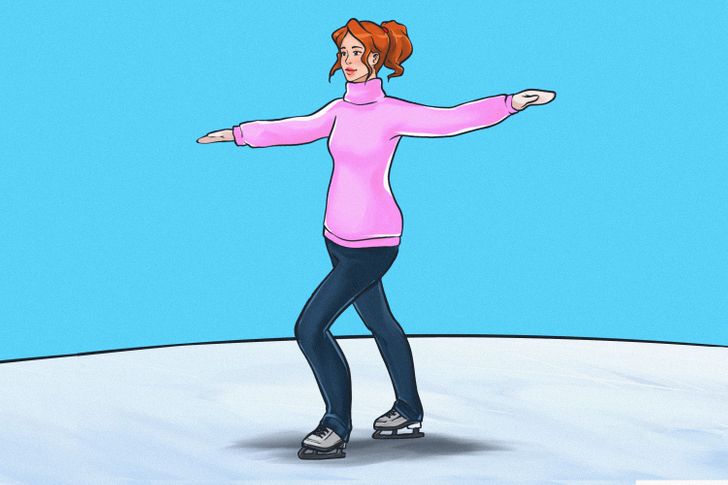
Put the right skate on its outer blade and bend your right leg at the knee in order to turn right. The tilt, as well as the turn of the head, should also be to the right. At the same time, the left leg should be straight and located behind and slightly diagonally to the right leg. The left turn is made in the same way.
Skating technique
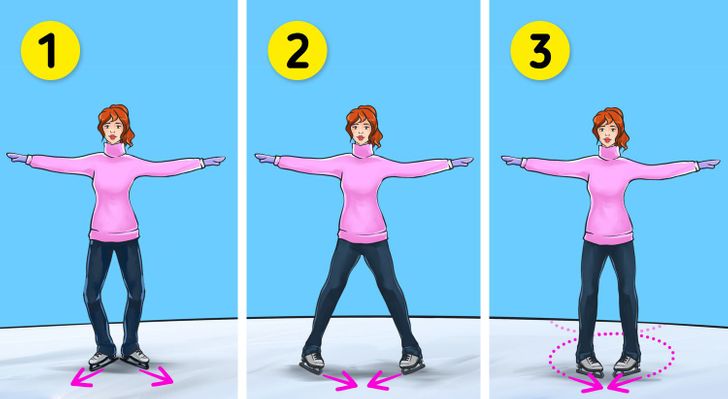
Once you learn to stand on the ice, slide, stop, and fall, you can try more complex exercises that will help you master the technique of skating. One of them is called “Twizzle.”
In order to do this exercise, point your knees and toes in opposite directions. Then push your legs apart, turning your feet with their toes toward each other, and glide the skates back together. The skates’ blades should be leaving a trace resembling a circle. Repeat this exercise several times moving forward on the ice while doing it.
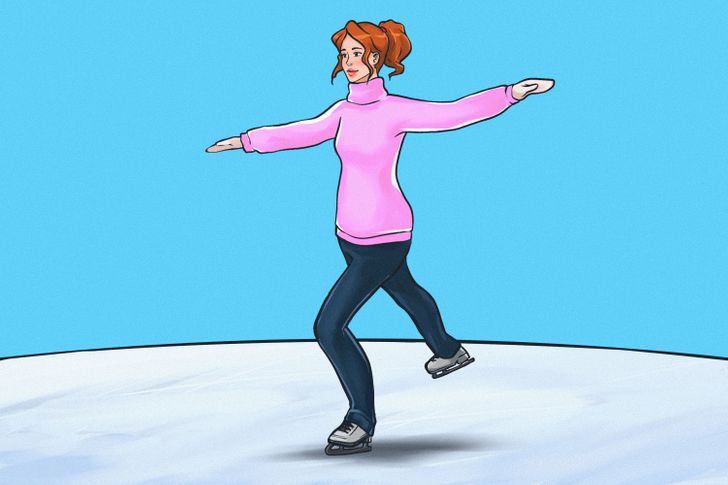
An exercise called “Scooter” can help you master the technique of gliding. Get in the initial position: place your legs parallel to each other, slightly bend your knees, and spread your arms to the side. For this exercise, push off with one foot, tilting your boot inward, and slide on your supporting leg. Then return the leg to the initial position and push off with it again. Push offs should be done with the same leg all the time.
General recommendations
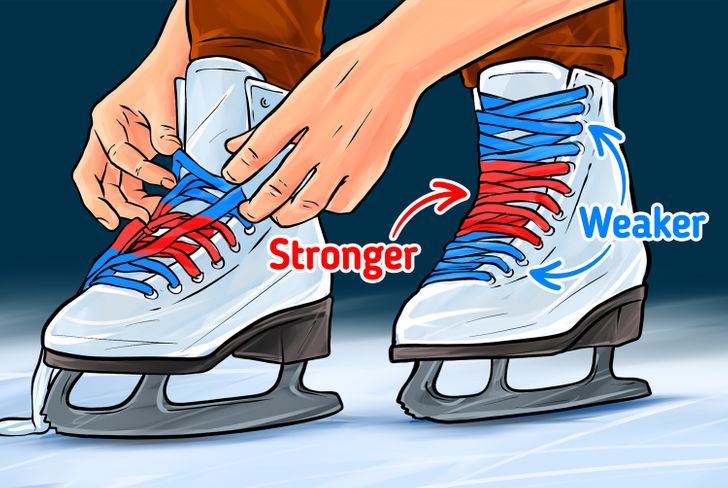
-
Choose a suitable skating rink. It would be better to opt for an indoor rink with a gate so that you can always grab on to it. One of the advantages of an indoor rink is that the quality of the ice is better there than on outdoor rinks. Moreover, you can skate in any weather.
-
Put on special clothes for winter sports activities and warm, but not thick, socks on your feet.
-
It’s better if someone who can already skate well escorts you to the rink for the first time. This person can give you valuable advice, help if something goes wrong, and hold your hand at the early stages so that you feel more comfortable.
-
Choose a time when there are not many people at the skating rink for several first training sessions. For example, in the morning right after it opens. Thus, the risk of crashing into someone and falling decreases significantly.
-
Do a small warm-up before going on the ice so that you can warm up your muscles. It will reduce the chance of getting injured. Tilt your head back and forth and from side to side several times, make circular movements with your head clockwise and counterclockwise. Rotate your torso, ankles, knees, and hips, first with one leg and then with the other. Touch the floor with your fingers several times standing on straight legs.
-
Go for skates that fit your feet properly and that are one size bigger than your regular footwear because you’ll be putting them on woolen socks.
-
Make sure to lace up the skates correctly. Lace up your skates in the same way you lace up your regular shoes in the toe zone. Tighten the laces at the instep area as much as possible to avoid injury to the ankle. Then again, slightly loosen the tension of the laces in the lower third of the shin. If you lace up your skates correctly, they will hold your ankle tight, they will fit your feet properly, and at the same time, they won’t block the circulatory system.